| Title | Gravity Circuit |
| Released | Jul 13, 2023 |
| Developer(s) | Domesticated Ant Games |
| Publisher(s) | Plug In Digital SAS |
| Platform(s) | |
| Genre | Action, Platformer, Indie |
| Rating | E10+ |
| Price | $16.99 (PC) / $21.99 (Console) |
| Proton | Proton Hotfix |
Completed on Linux on Normal
HowLongToBeat Time: 6 Hours (Main + Sides) | My Clear Time: 4 Hours 2mins
Background
Developed by Domesticated Ant Games and published by PID Games, Gravity Circuit is a retro-styled 2D action platformer released July 13, 2023, for PC, Nintendo Switch, PlayStation 4, and PlayStation 5. Developer Antti’s Steam devlog reveals a decade of on-and-off development, with full-time work starting in 2021, evolving features like the game-defining hookshot that reshapes combat and traversal.
Inspired by Mega Man’s nonlinear stage progression, Gundam’s sleek robotic designs, and fighting games’ fluid combos, it delivers tightly paced stages and dynamic, combo-driven combat. Their expertise in pixel art, music, and design crafts Gravity Circuit’s retro-futuristic charm.
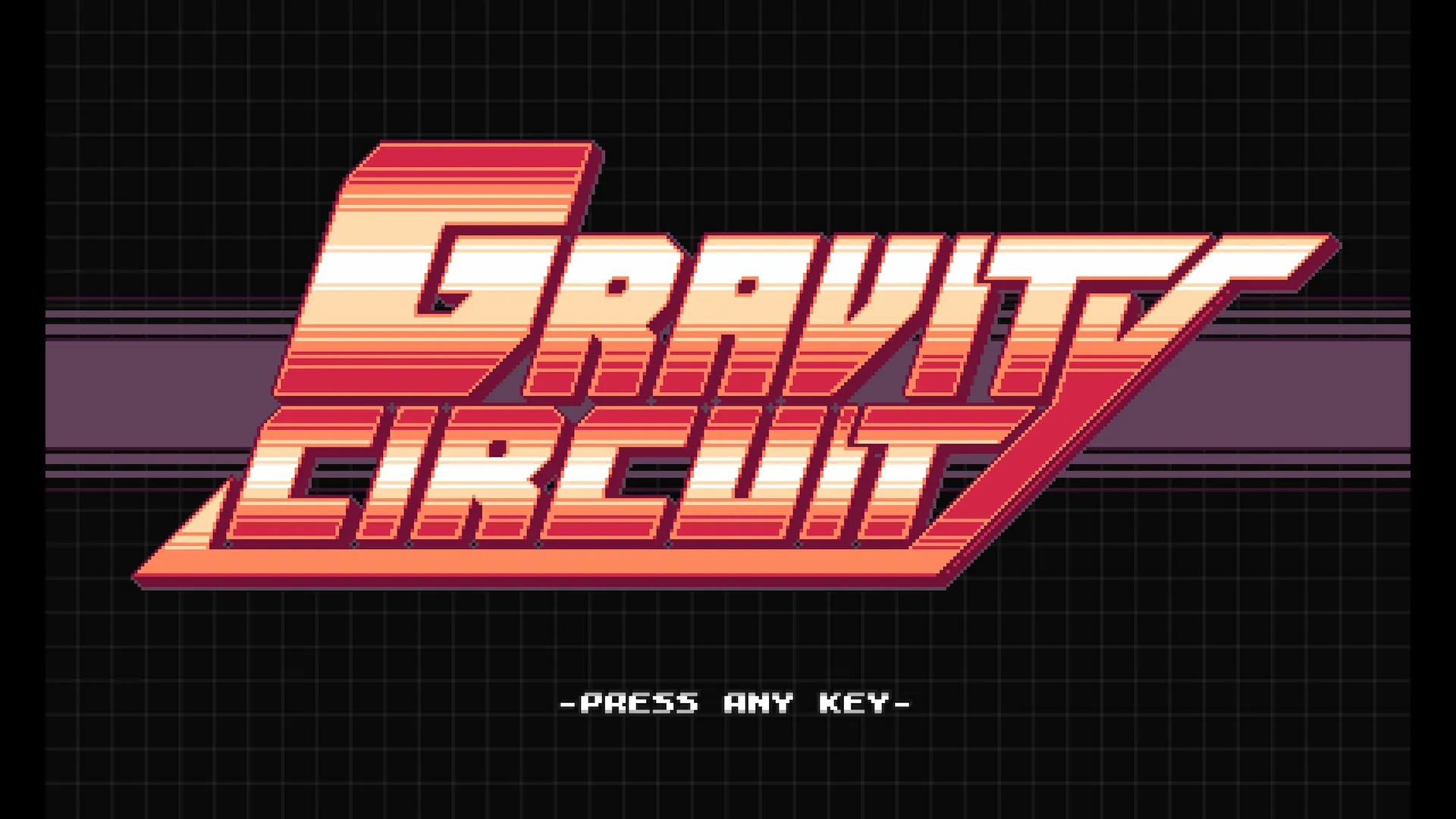
Kai’s retro circuit grabs hold!
The development team for Gravity Circuit includes:
- Mae Livingston (Environmental Pixel Art)
- Mighty Morphin Power Rangers: Rita’s Rewind, Völgarr the Viking II, The Making of Karateka
- Colin Hughes (Cutscene and Portrait Art)
- Broken Sword: The Smoking Mirror I & II, Gravity Circuit
- Dominic Ninmark (Music & Sound, Character Artist)
- Guns of Fury, Blazing Chrome, Gravity Circuit
- Stanislas Jun Peyrat (Producer/Brand Manager)
- Vernal Edge, The Land Beneath Us, Skábma: Snowfall
Experience
As a veteran of Metroid, Castlevania, Bloodstained, and recently Virtua Unlimited Project, I’m primed for 2D action platformers. My 4-hour clear time on Normal, beating the 6-hour HowLongToBeat average, reflects honed platforming skills, focusing on Gravity Circuit’s precise mechanics and replayability over narrative depth.
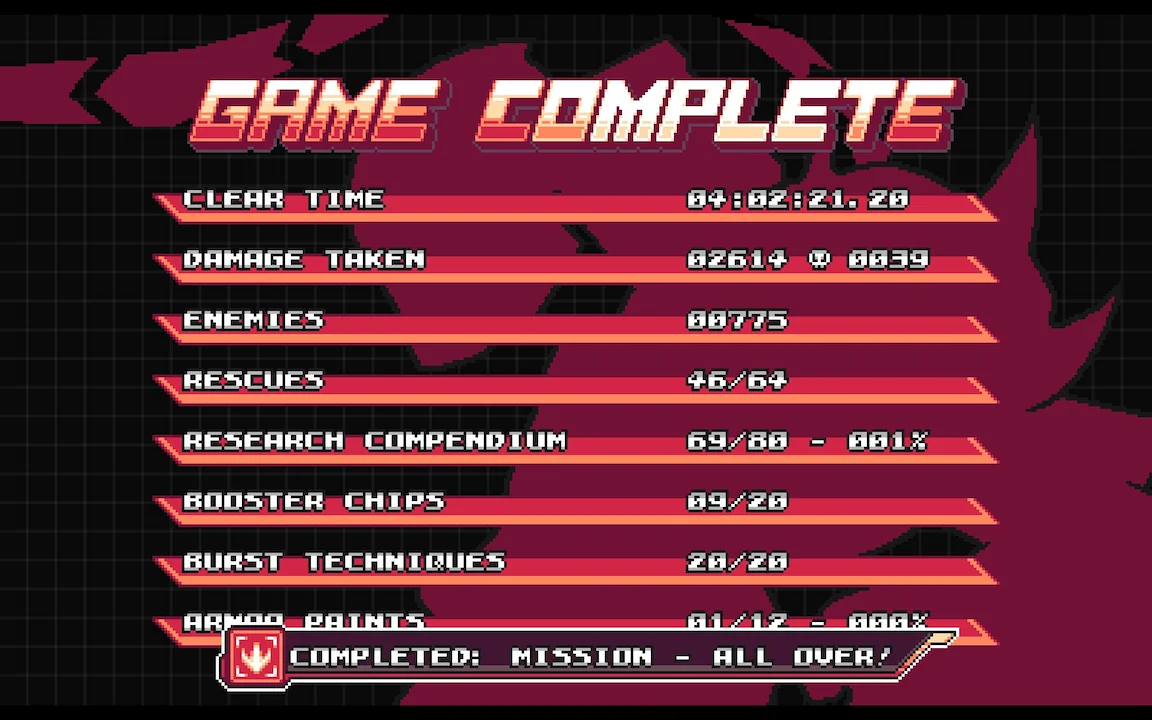
Years of platforming prowess guide the way.
Knowing composer Dominic Ninmark’s high-octane work from Guns of Fury, I expected a soundtrack to drive the action—and it delivers.
Impressions
Introduction
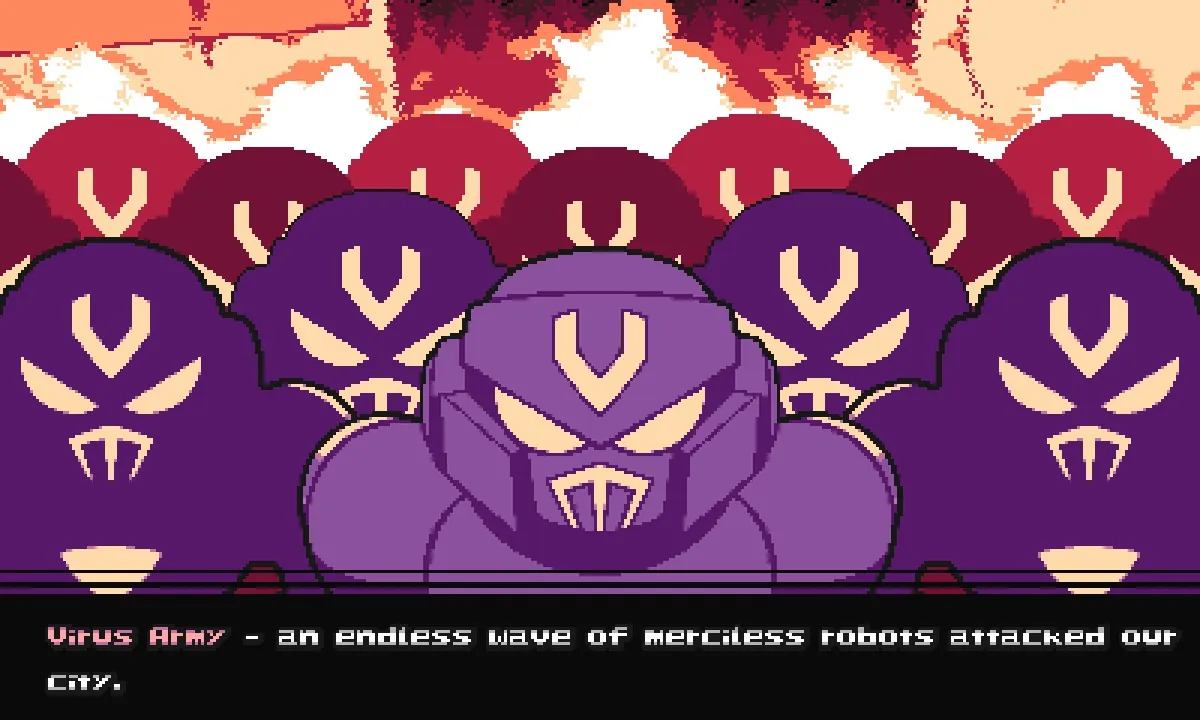
Kai battles to save a city under siege.
Gravity Circuit casts you as Kai, a lone operative battling the Virus Army—a rogue robotic force attacking a futuristic city. Pixel-cutscenes and brief NPC exchanges deliver a light story, boosting gameplay pacing for action fans but offering little emotional depth for story-driven players.
Gameplay & Mechanics
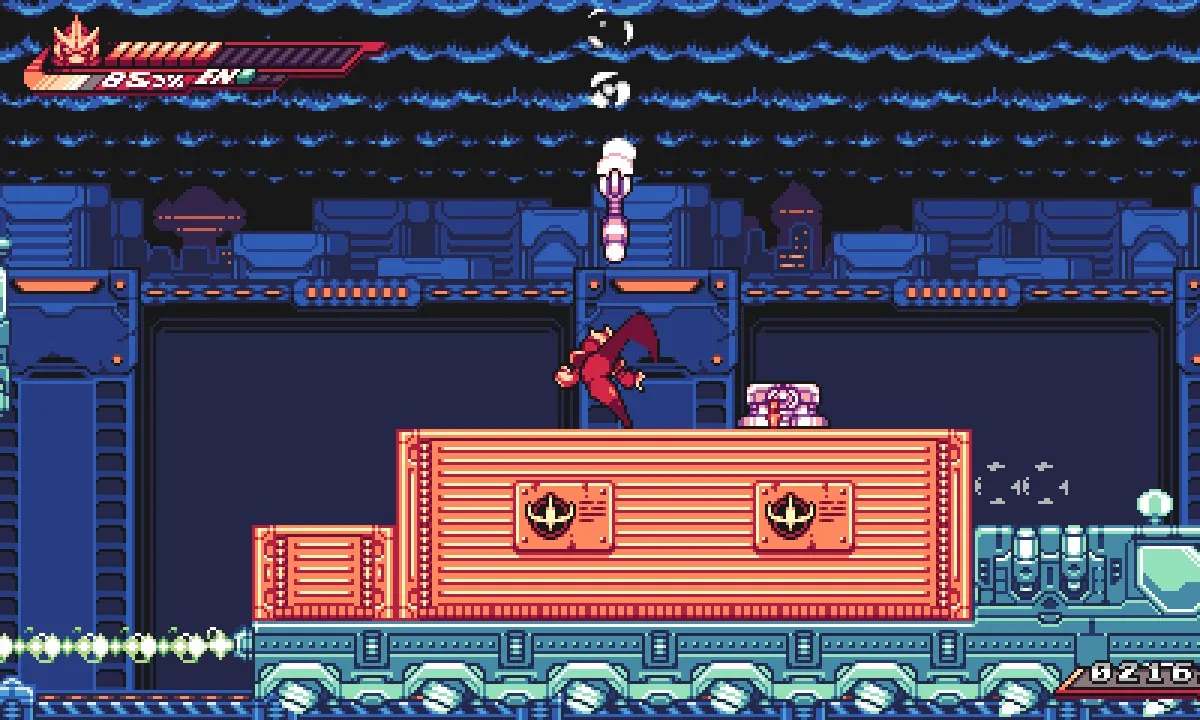
Missiles meet their match midair.
Core Combat
Kai’s melee combat is snappy, chaining a three-hit combo, charged strikes, and a dive kick that juggles enemies with precise timing. Its dynamic, fighting game-inspired rhythm rewards split-second dodging and movement-based attacks, staying intuitive without complex inputs.
My experience chaining combos in Bloodstained made Kai’s flow feel instantly rewarding.
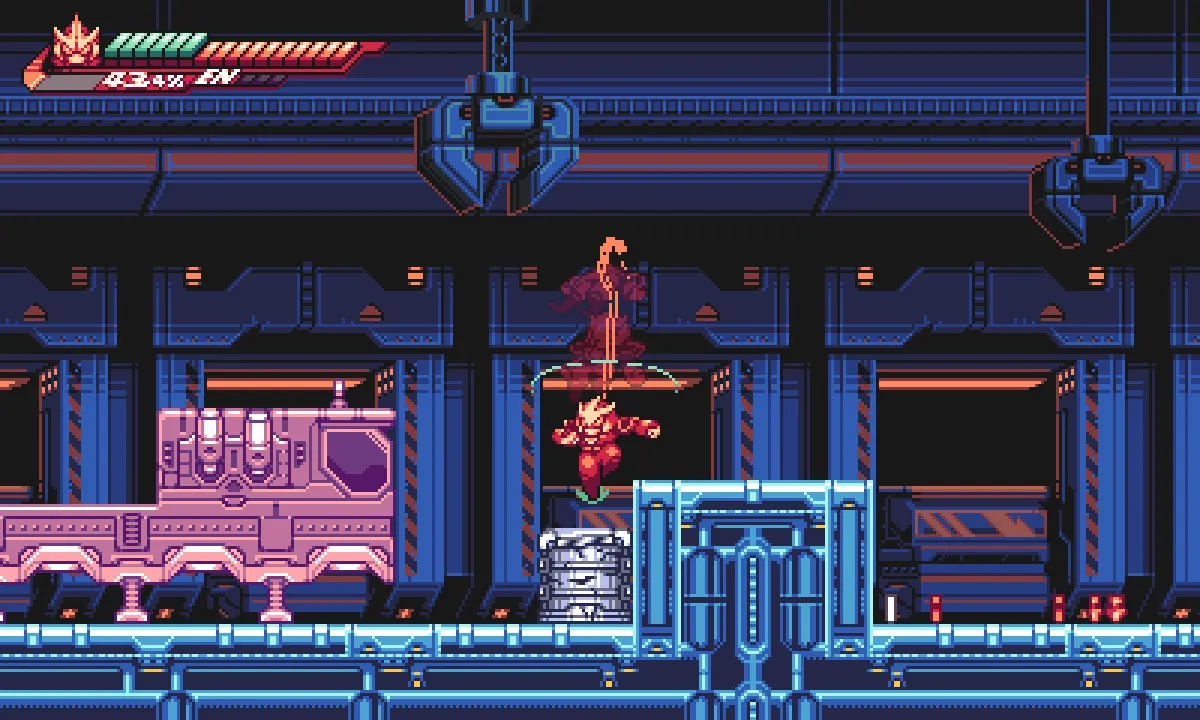
Kai kicks trouble to the ground.
Dive Kick
Aerial and aggressive, Kai’s dive kick adds vertical flair, enabling pinpoint dodges, combo extensions, or gap-closing strikes. Its precise timing, honed in my 4-hour run, feels satisfyingly versatile, rewarding skillful flow in chaotic battles.
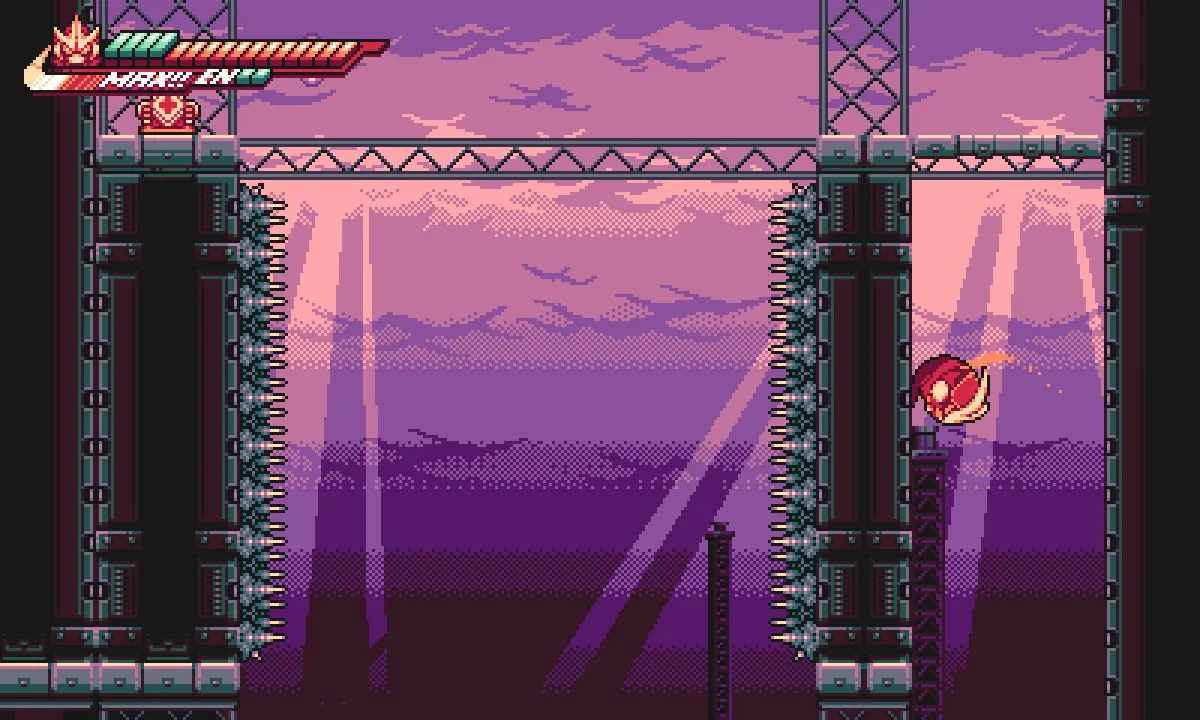
Kai masters vertical mazes.
Wall Jumping
Kai scales walls fluidly, boosting level traversal with seamless momentum. Required for exploration or dodging hazards, wall jumping integrates with combat for dynamic positioning, a nuance I leveraged to speed through stages efficiently.
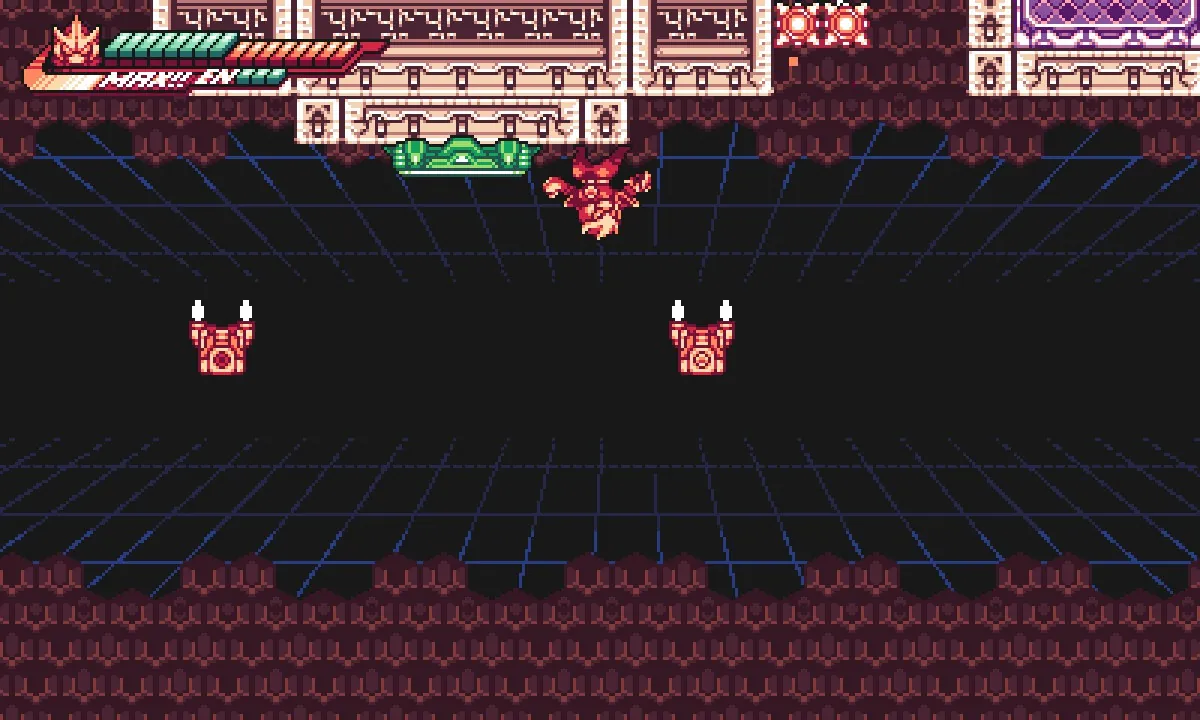
Gravity’s rules take a new angle.
Platforming
Stages blend verticality and timing, with wall jumps, ground slides, and dive kicks integrating into combat for seamless dodging or exploration. Smart level design offers risk/reward detours for rescues and secrets. Forgiving checkpoints and chip customization ease newcomers into the 4–5 hour runtime, while precise mechanics thrilled my veteran instincts.
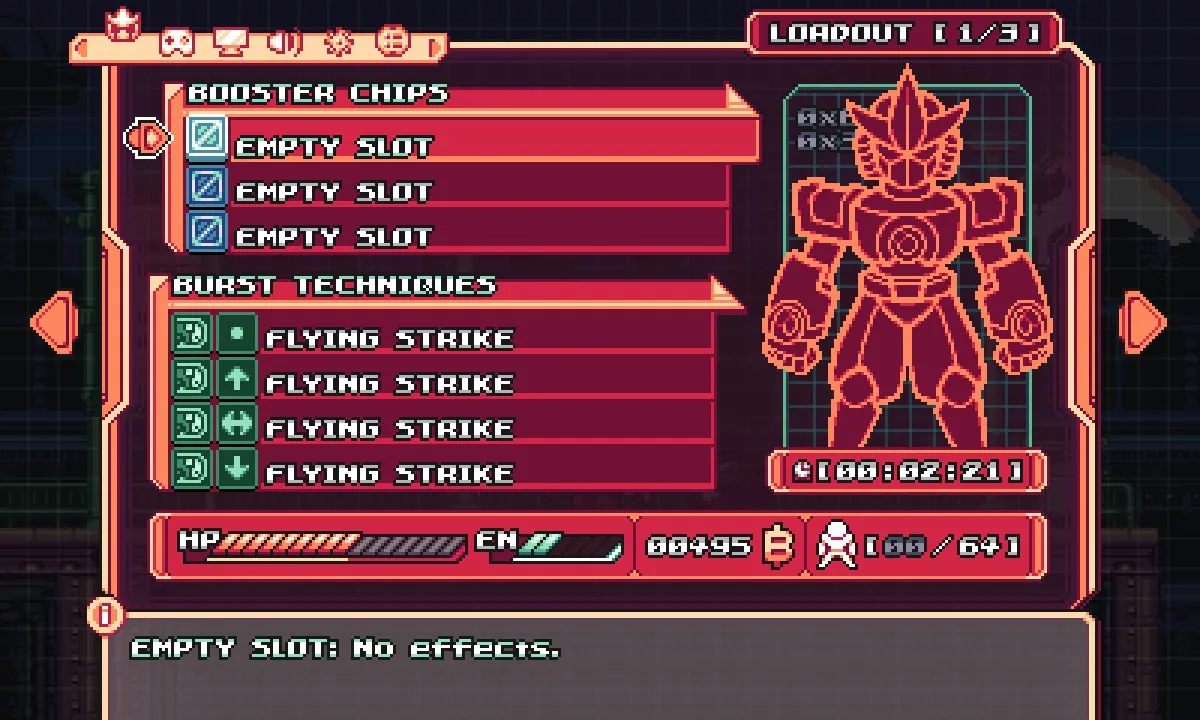
Kai’s arsenal levels up.
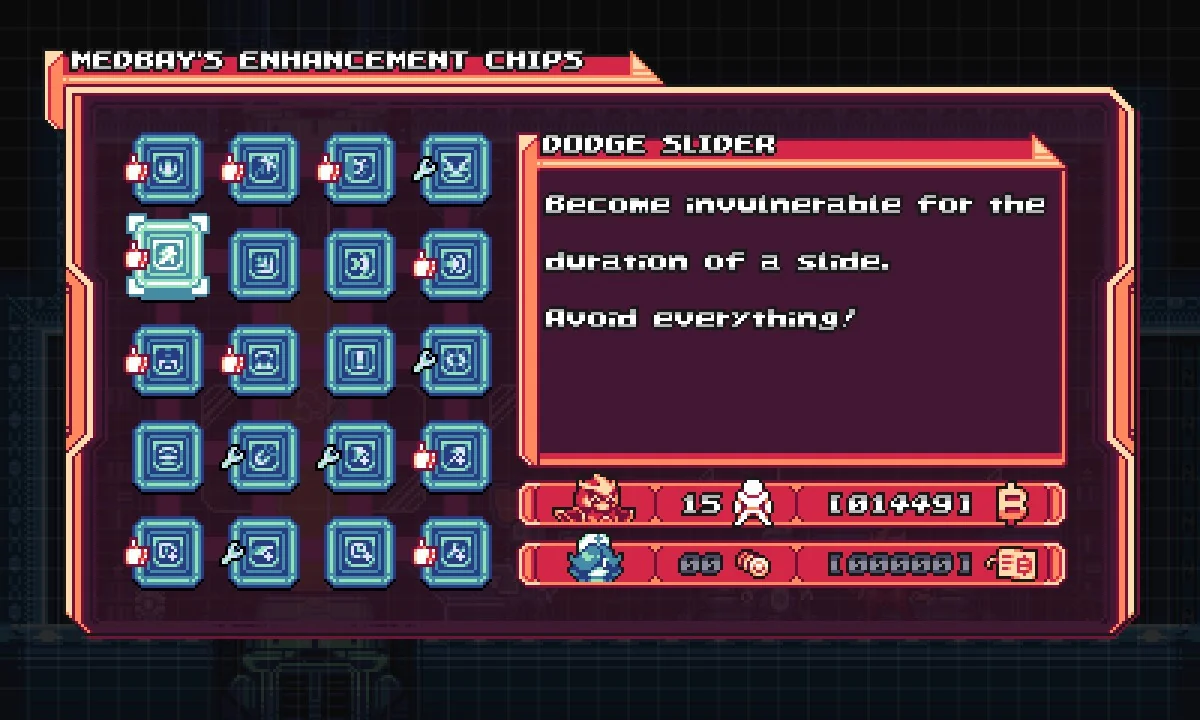
Dodge slider keeps you swift.
Customization
Between stages, equip up to three chips from the Medbay shop for bonuses like faster energy recharge, enhanced defense, or new Burst Techniques, tailoring Kai’s combat—aggressive or tactical—without complexity.
My preference for speed-focused chips shaped my swift clear time.
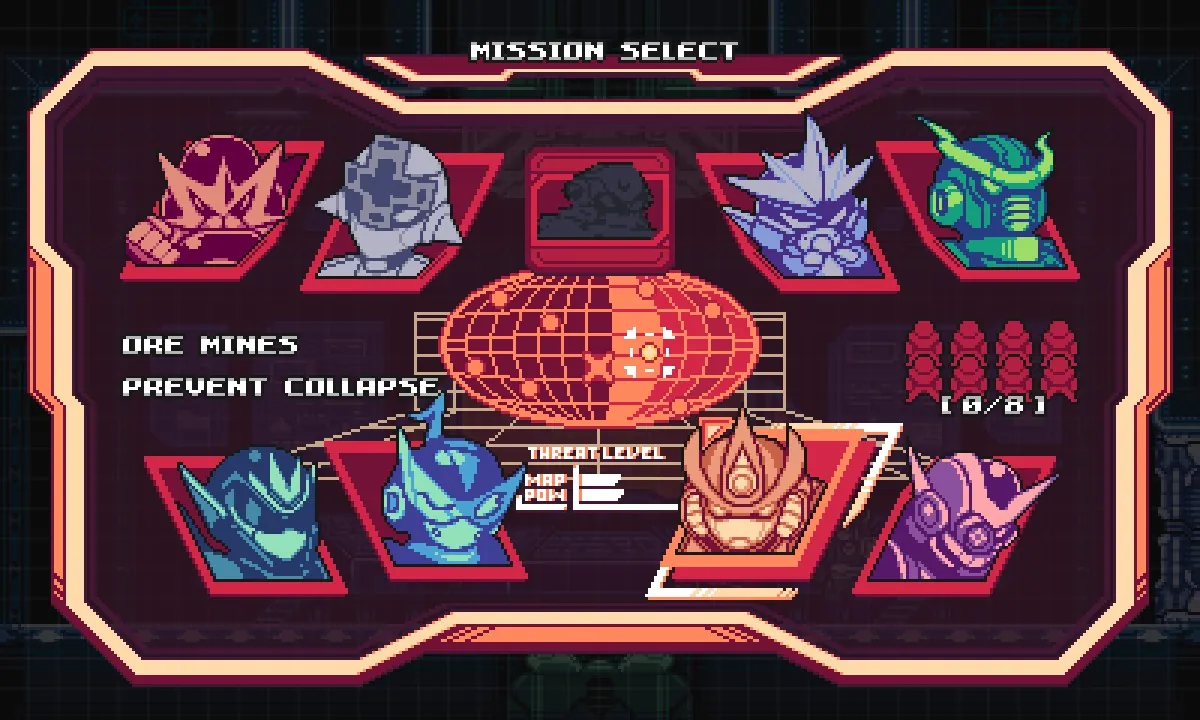
Ore Mines await Kai’s heroics.
Stage Select
Eight thematically distinct stages—icy mountains to collapsing mines—can be tackled in any order, with optional paths boosting replayability before the final gauntlet.
My strategic stage choices maximized rescue rewards, enhancing replay value.
Art & Audio
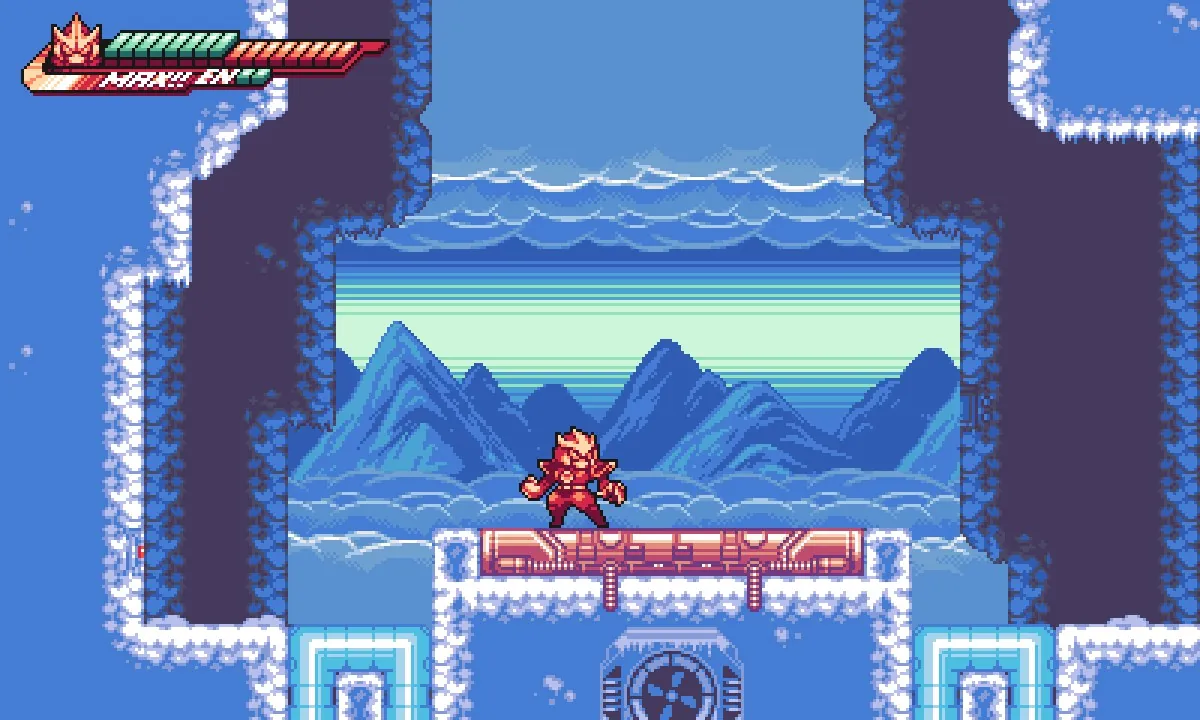
Gravity Circuit’s art layers bring the cold to life.
Visual Design
Late-’90s pixel art pops with bold colors and readable sprites. Kai’s weighty animations and clear enemy silhouettes enhance high-speed combat, while distinct, layered stage backgrounds immerse players in varied worlds, a visual treat I savored in every stage.
Audio Design
Dominic Ninmark’s synth-heavy soundtrack drives combat’s intensity and exploration’s flow, amplifying every punch and jump. Each track fuels its stage or boss, with punchy SFX balancing the soundscape, a standout in my playthrough.
Standout Tracks:
Theme of Kai (Gravity Circuit): Heroic, confident, and energetic. Establishes tone immediately with driving synth leads.
Theme of Crash (Break Circuit): Chaotic and frantic with aggressive tempo shifts—perfect for a berserker-style rival.
Theme of Cable (Power Circuit): Cool, calculating, and methodical. Pulsing bass and slick composition mirror Cable’s tactical persona.
Unique Features & Mechanics
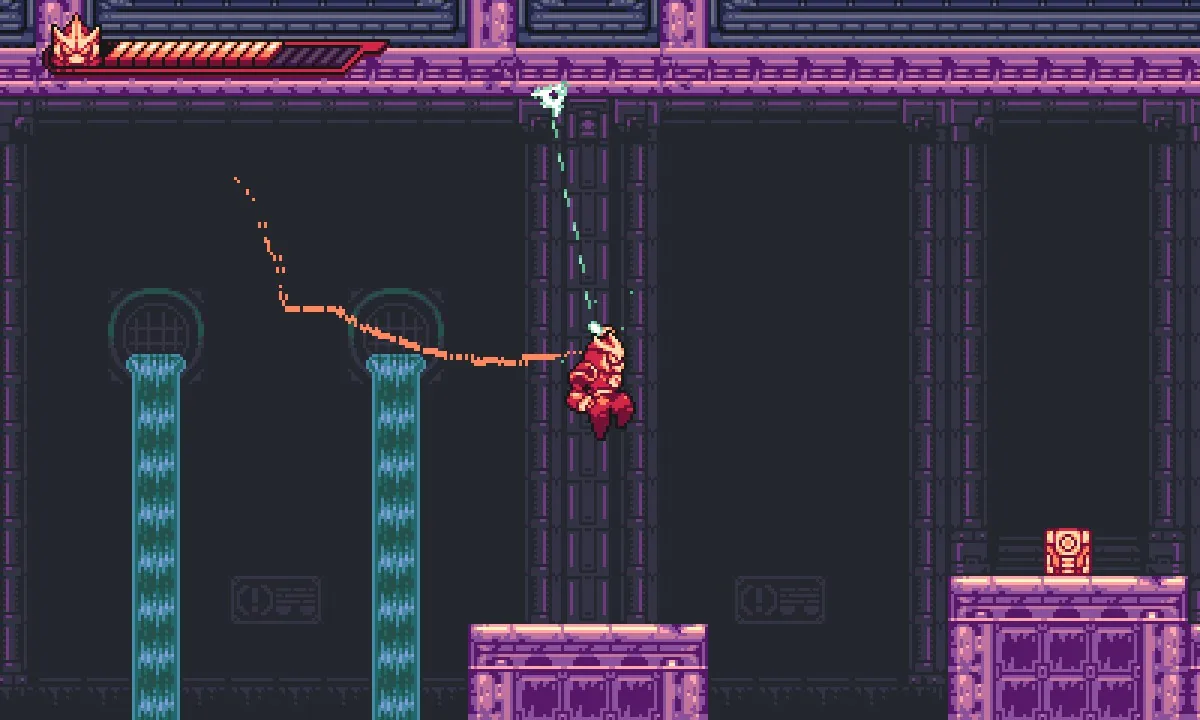
Kai’s hookshot shifts the tide.
Hookshot
Rare in platformers, the hookshot swings Kai across gaps with fluid momentum, pulls enemies for devastating throws, or moves objects to solve puzzles. Its physics-based system, unlike Mega Man’s static movement, demands precise timing but rewards creative combat and traversal, a highlight of my speedrun strategy.
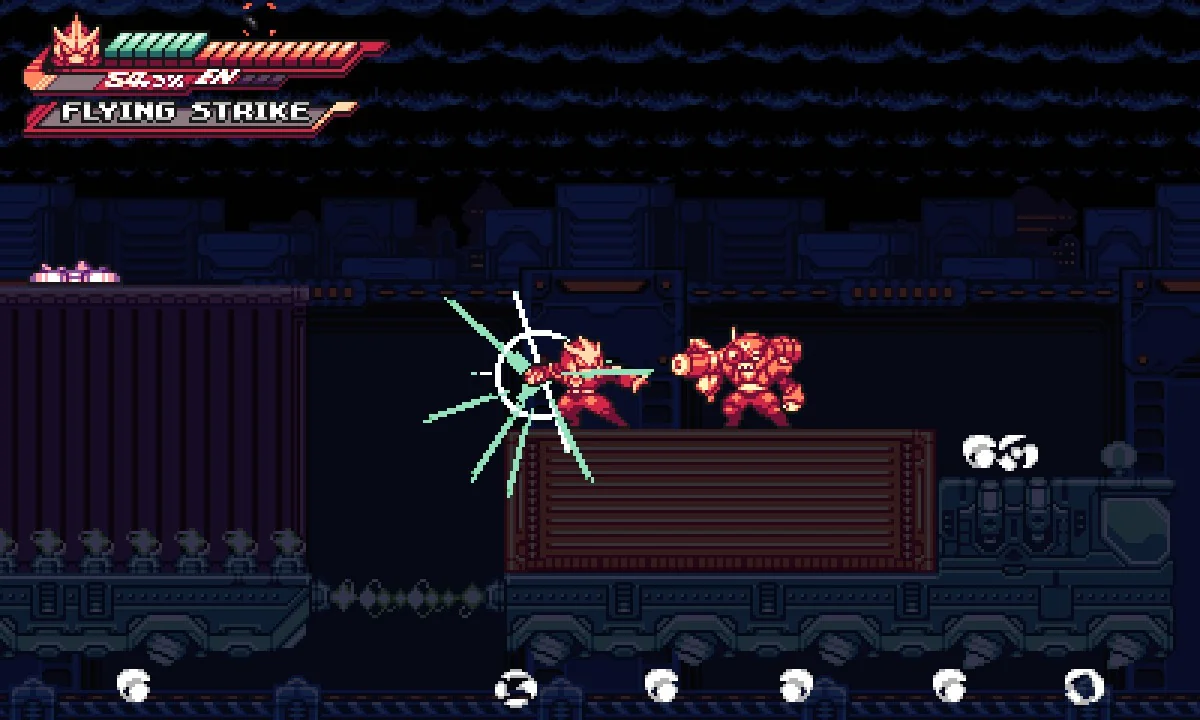
Kai’s Burst Techniques electrify foes.
Burst Techniques
Inspired by fighting game supers, Burst Techniques replace Mega Man’s elemental weaknesses with resource-based attacks, like spinning strikes or energy blasts, emphasizing timing and combo flexibility. Their flair elevated my boss battles, adding strategic depth.
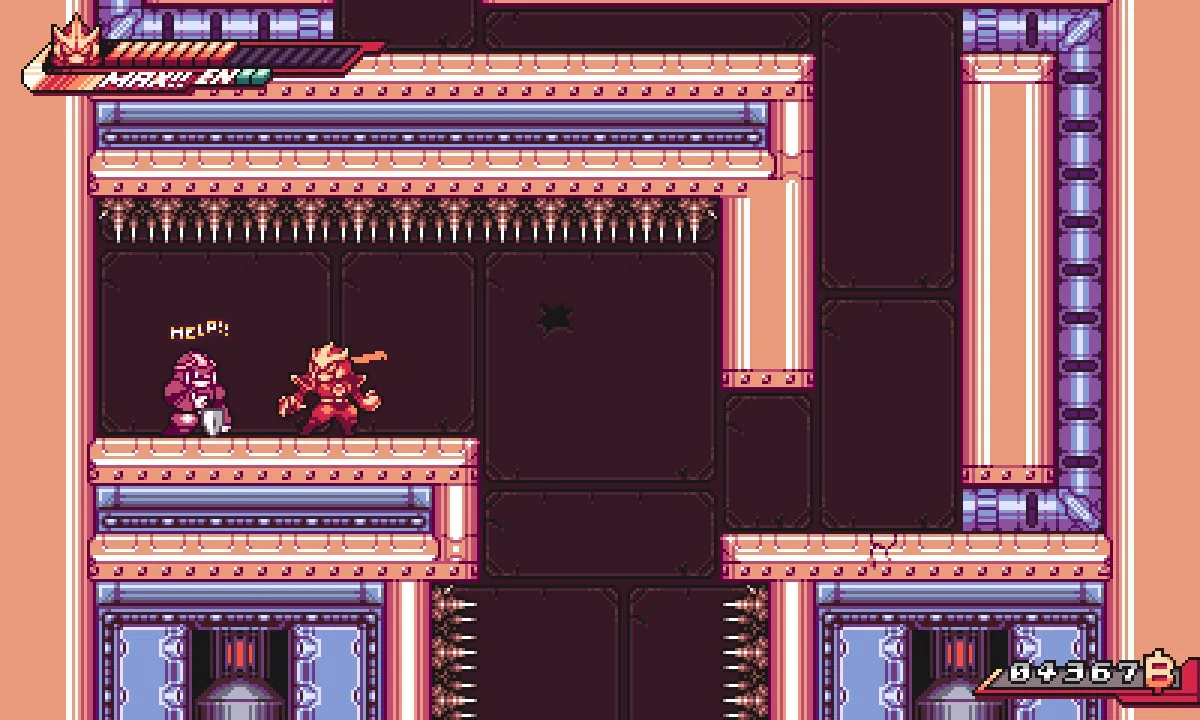
Rescue missions add depth to the fray.
Rescue System
Hidden civilians in stages grant upgrades like health boosts or enhanced chips, rewarding exploration with tangible power-ups. This balances speedrunning with discovery, a unique layer I leaned into for upgrades, enriching my 4-hour run.
Verdict
Gravity Circuit supercharges Mega Man’s formula with fighting game flair, delivering sharp combat, fluid traversal, and a stellar hookshot. My 4-hour clear time on Normal, beating the 6-hour average, highlights its tight mechanics.
A thin story and skill-based boss fights may test narrative fans or Mega Man purists, but its 4–5 hour runtime, replayable via stage choice and rescues, rocks. Accessible for newcomers yet thrilling for pros, it’s a retro gem.
At $10 on Steam Summer Sale, it’s a must for Mega Man Zero or Blazing Chrome fans—one of the best indie action platformers around.
TLDR
Gravity Circuit (Linux)
9
Excellent
Summary: Gravity Circuit blends fast melee combat, a dynamic hookshot, and fighting game-style Burst Techniques into a polished, retro-inspired package. Its fluid platforming and striking visuals make it a must play for 2D action fans.
Grab it on Steam or consoles for a fresh take on the Mega Man formula.


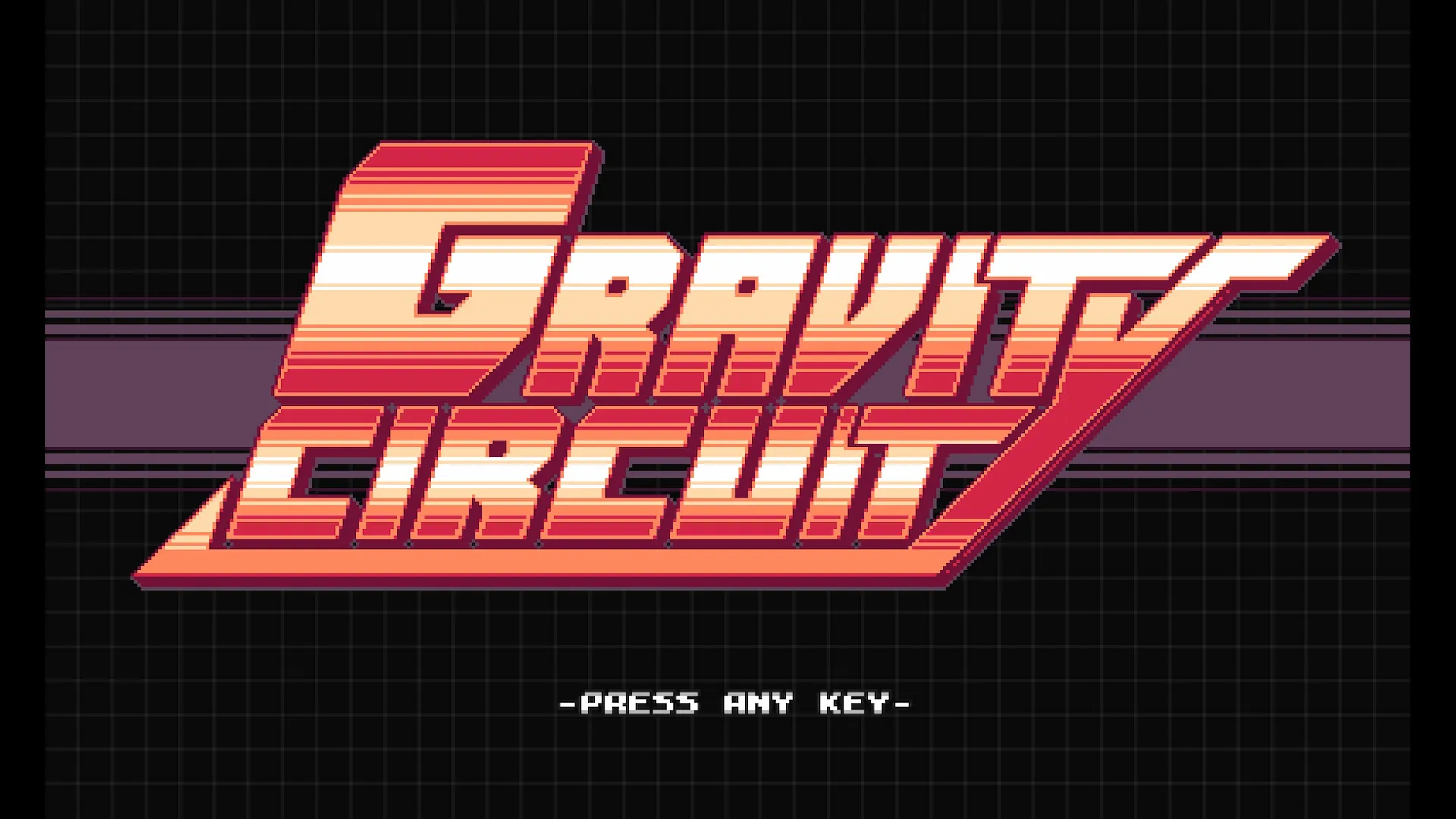
Leave a Reply